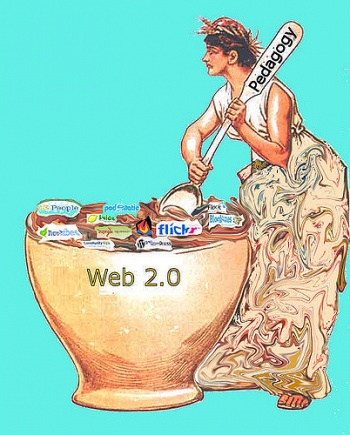Technology for your context
| Foundation Skills | |
|---|---|
| Developing and using basic teaching resources and equipment | |
| Using technology in teaching | Objectives | Technology in the classroom | Web 2.0 | Technology for your context | e-Activity | Summary |
The challenge for you as a teacher (or lecturer) is to make a concerted effort to use new technologies in your teaching and learning context. Of course, you may already be trying new tools regularly but we also know that Web 2.0 tools are quickly dated and students become bored very quickly. So, to keep students interested, it's probably a good idea to use a greater variety of Web 2.0 technology tools in your teaching context and to incorporate new ones regularly.
- By using 'portable' technologies, your students will have greater access to the learning environment. That means, you need to select approaches that can be easily accessed and used from any device, for example, laptops, mobile phones and tablets. A large number of digital tools and applications (apps) are now available for this type of learning, known as mobile learning.
- How much do students know about using technologies for learning?
Don't be fooled by your students' confidence in using sites such as Facebook. It is common knowledge that many 21st Century students have a limited knowledge when it comes to understanding how to use Web 2.0 and other technologies effectively for learning. You as their teacher will need to guide them on not only how to select appropriate technologies but also how to use them. They will need guidance on how to find information, how to manage it and how to re-create That means you need to try out lots of different tools and 'play' with them, and use them yourself in practical ways to assist your teaching. This will help you to develop your confidence. Making mistakes is all part of the fun so don't expect to get it right the first time.
- An example of sharing resources with students.
- A quick and effective way to do this, is to set up an account on something like:
- Delicious - a social bookmarking site;
- Pinterest - a visual bookmarking tool;
- Instagram - images and video on many topics;
- Youtube - video playlists or a channel can be set up.
- You might also ask your students to set up accounts on sites like this so they can share the resources they find with the rest of the class. These tools can save hours copying and pasting URLs into the Learning Management System.
- How to choose technologies?
- Firstly, ask yourself, how can I increase social learning interactions both inside and outside the classroom?
- Secondly, select technologies that will enhance how students learn.
- This means considering how they can interact with subject content and organise it, share information amongst themselves when engaging in learning tasks and communicate with you, their teacher.
- Thirdly, decide on methods that can easily be used, no matter where your students are located or what ICT device they are using.
- The more mobile the 'computer' the easier it is for students to access and create their learning.
- Flipped classrooms
- Have you heard of this term? This type of classroom is where students go through content in their own time and class time is used for discussion, debate and collaboration. A number of digital tools can be used to support this type of teaching. This Educause article (2012) 7 Things You Should Know About Flipped Classrooms is worth reading.
|
1. For details of the top one hundred technology tools for 2015, check out the list on the Centre for Learning and Performance Technologies website.
2. A simple explanation and justification for flipped classrooms is provided in the video clip Why I flipped my classroom (3.27 min) by Lodge McCammon.
3. Think about how you could use technology tools to help students learn both inside and outside the classroom.
Write down some ideas in your portfolio and share with the class.
|
